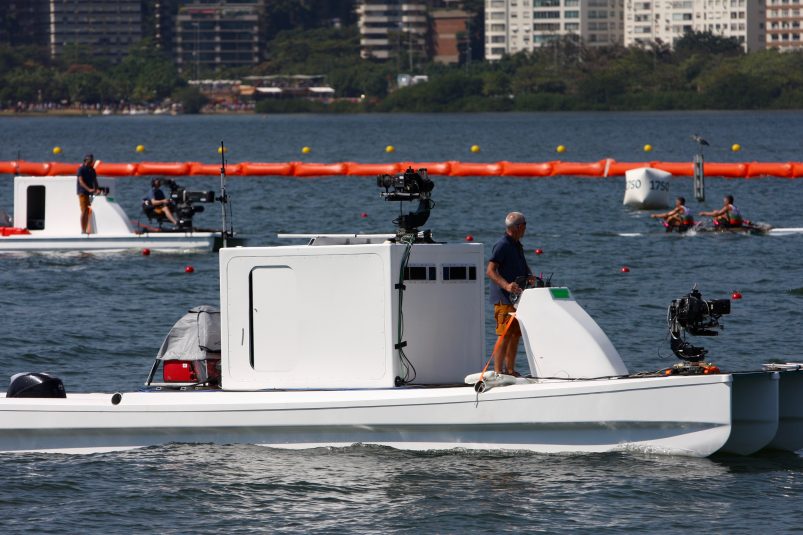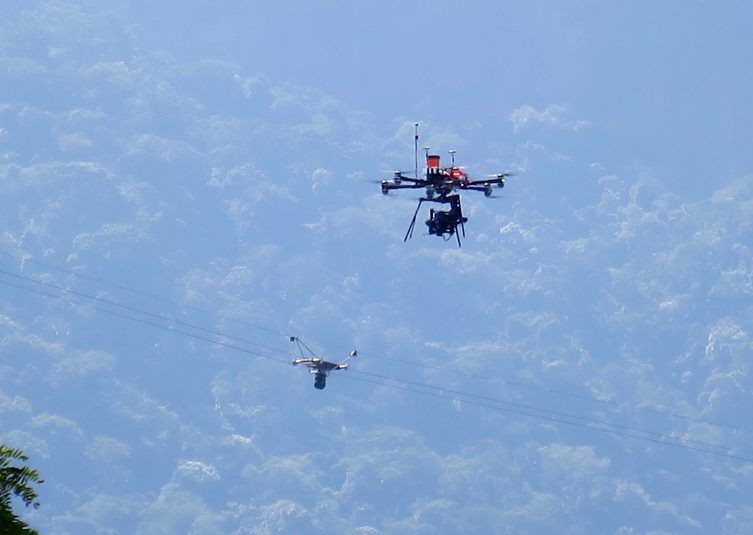Live From Rio 2016: Rowing Coverage Takes to the Skies; EVS Takes to the Waves
The rowing competition, one of the first sports to get under way, started early on Saturday with a morning full of scull heats and demonstrated why rowing is one of the more challenging sports productions: the coverage features a wide variety of specialty cameras, including a point-to-point cable system spanning 2 km across Rodrigo de Freitas Lagoon.

The camera on this boat is tied to an on-board EVS system that is clipping high-speed shots and transporting them to shore via RF.
Coverage from the shore is provided by eight handheld cameras and 12 hard-wired camera, including a super-slow-motion system near the finish line. Aerial coverage is provided by a drone flying alongside the course over the lagoon (and far from spectators) as well as the Camcat cable system.

The rowing events at the Olympics have two forms of aerial coverage: a Camcat cable cam and a drone.
The production is also making use of seven cameras mounted on five boats on the course. Two of the cameras are high-speed super-slow-motion systems; a third is a regular super-slow-motion. What makes the production unique is that there is an EVS system and operator on each boat that has the high-speed camera and clips are created on the boat and sent to the production team on shore via wireless transmission. Because only the clip is sent, the production team doesn’t have to transfer massive amounts of camera data from the boats.
For a gallery of photos taken from Lagoa Stadium, click here.
